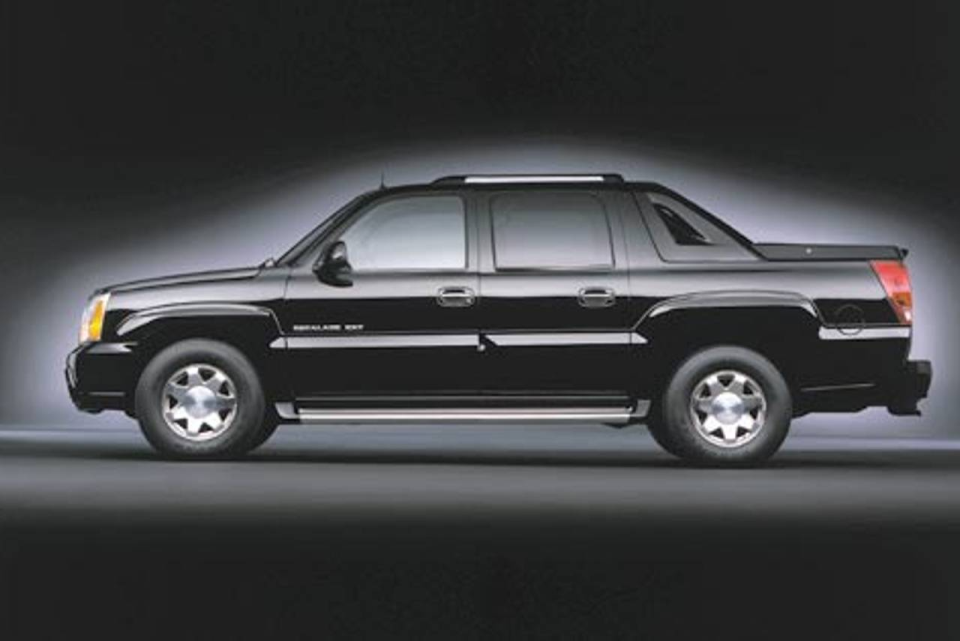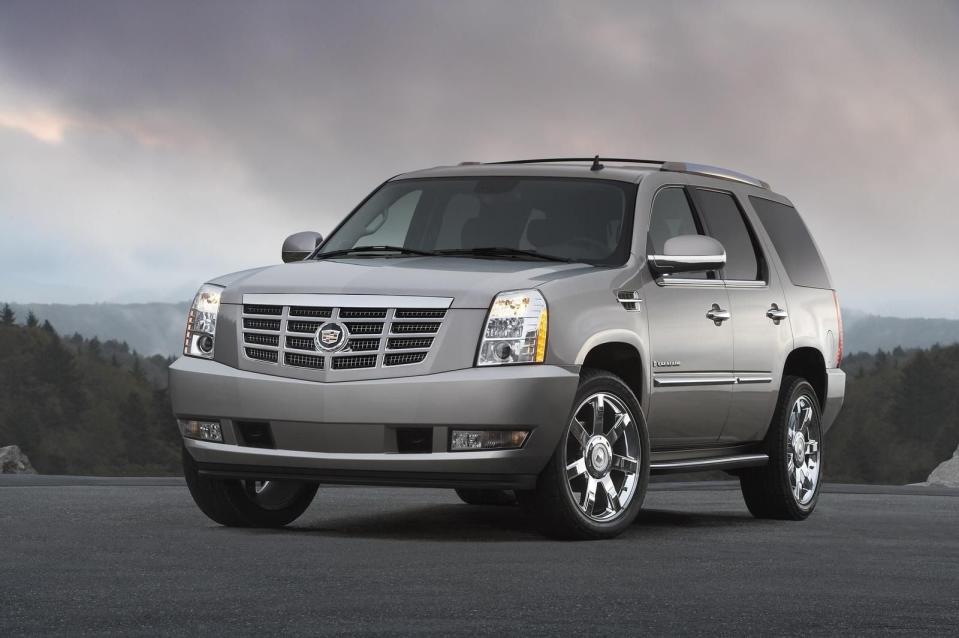The Cadillac Escalade Turns 25. Happy Birthday to the SUV That Shaped Pop Culture

The year was 1999. Cell phones still had squishy rubber buttons, Jay-Z was an up-and-coming artist, and General Motors introduced the Cadillac Escalade, a tarted-up Chevy Tahoe that unknowingly kicked off a wave in pop culture. It was the status symbol for everybody who was anybody while becoming the aspirational item for an entire generation. It was that important, and now, it’s turning 25 years old.
Built on GM’s GMT400 platform, the Escalade wasn’t the first body-on-frame luxury SUV—that would be the Range Rover, first sold in the U.S. in March 1987 and in its second generation as of 1994. Lincoln beat GM to the punch with the Navigator in 1998, too. But where the Range Rover had an air of tweed-wearing British sophistication about it and the Navigator featured Ford’s trademark droopy-jellybean styling of the era, the Escalade was boxy and in-your-face.
The Escalade’s base price in 1999 was $46,525—about $3,500 more than an equivalent Denali and more than $85,000 in today's money. “It’s going to take some time for Cadillac buyers to adjust to seeing this hulking monster on the same lot as Eldorados and Sevilles,” MotorWeek’s John Davis said in a period review. Whether or not regular Cadillac buyers ever got used to it was one thing, but the Escalade brought an entirely new demographic into the brand's showrooms.
https://www.youtube.com/watch?v=bR4ryMystXY
Things really heated up in 2001 when GM unveiled the second-generation ‘Slade as a 2002 model. As the last of its corporate siblings to hop aboard the GMT800 platform, the Escalade got a chrome-trimmed face and boxy headlights that set it apart from its siblings by being even more brash than before. (This unintentionally set off a wave of Escalade front end swaps onto other GMT800 trucks.)
The second-generation Escalade revitalized Cadillac in a way few could have predicted. After Harley Earl's tailfins petered out into emissions-choked '70s land yachts and '80s boxes, Cadillac's customers only aged. The brand needed to broaden its appeal to a younger base, and the Escalade did exactly that.
Touchscreen GPS, satellite radio, and a rear-seat DVD entertainment system became options in 2003, and GM followed the punch with the extended-wheelbase ESV and Avalanche-based EXT pickup truck. Because what’s one Cadillac truck when you can have three?




Ford fired back with the second-generation Lincoln Navigator in 2003 and the Mark LT pickup truck in 2005, but it was too late. The Escalade had taken the throne as the poster child of the Dub era. Twenty-four-inch wheels, scissor doors, air-ride, and a sixteen-inch sub in the trunk got you in the door, but why stop there? Let’s add more screens than you can count, chrome-plate the engine bay, and … is that a fish tank?
It’s easy to write off the Escalade as a badge-engineered Chevy and the ‘04 Rich era’s flamboyant excess as meaningless consumerism, but both were more than that. GM saw a market opportunity in an SUV that prized urban style over ruggedness and simplicity, and it executed flawlessly.




Likewise, the Dub era brought a new generation of car enthusiasts into the fold, with the same obsession for tweaking their rides that consumed the drag racers, lowriders, and cruisers before them. As a seven-year-old kid from West L.A., I wanted an Escalade on 22s because it’s what Dre and Snoop were driving.
Twenty-five years on, I’m glad the Escalade is not only still going strong but headed into a new, all-electric generation later in 2024. Like it or not, it’s a truck that resonates with people, and in a sea of faceless gray crossovers, that counts for something.

 Yahoo Autos
Yahoo Autos 